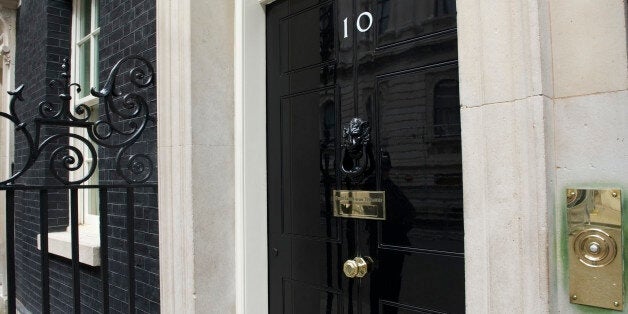
Being Prime Minister is an unusual job. Not just because it comes with the most famous front door in Britain, or because the person applying to replace you gets to stand on national television and shout at you for half an hour every Wednesday afternoon. The job of Prime Minister is unusual because it doesn't come with much of a job description - it is what you make of it. That means every occupant of Downing Street brings their own personal management style to the job, and Theresa May is proving no exception.
From the moment she became Conservative leader, it was clear May's approach would differ from that of her predecessor. David Cameron was often described as a "chairman of the board" figure, letting his Ministers plough their own furrows after he set an overall direction for the Government. Helped along by the constraints of Coalition Government, this approach led to remarkably stable Government. Unlike Tony Blair, who reshuffled his Government faster than a deck of cards in a casino, Ministers across Government had time to learn their briefs and develop policy. This hands-off approach wasn't without its problems though. Cameron, Osborne and their policy chief, Oliver Letwin, famously didn't understand the NHS reforms being proposed to them by Andrew Lansley. Once the details were revealed, it proved to be hugely controversial and had to be massively scaled back after a bruising political battle.
All the early signs are that May's governing style will be different. She is already approaching the job in the same way she approached being Home Secretary. May is projecting a straight-forward, no-nonsense style while making it clear she's got her eye on the details and won't be making rash - or rushed - decisions. The message they are trying to convey is clear: After the EU referendum, this is a time of great national turmoil, and we have a Prime Minister who will consider all the evidence and make the right decision for the UK in the long-term.
But it's not just the image that May is bringing over from the Home Office with her. Her tenure as Home Secretary was characterised by a tight grasp on every aspect of her Department's work - an approach some would describe as micro-management. As her spats with Michael Gove or her Liberal Democrat colleagues showed, this wasn't always limited to her own Department. At the same time, her relationship with the media was also very deliberate. She limited her personal exposure to the press, both publicly and privately, and chose to stick to a carefully planned calendar of media appearances. It might have been picking a fight in a big speech to the Police Federation, followed six months later by a major intervention on immigration at Conference. You weren't likely to see her popping up on the World at One in-between, much less on the This Morning sofa.
If this feels familiar, that's because it is. The approach Mrs May most risks resembling is that of Gordon Brown. Like May and the Home Office, Brown firmly held the reigns at the Treasury and had complete mastery of his brief. The same eye for detail served him well when it came to dealing with the global financial crisis as Prime Minister. But during the rest of his time in the driving seat, it was an approach that was doomed to fail. As May will also find, micro-management from Downing Street just isn't possible. There is too much country to govern, and too little time to govern it. Meddling in the detail of individual policy areas or departments might make May feel like she is in control, but it's also the fastest way to alienate her Cabinet colleagues and create a dysfunctional Government.
It's not all bad news. Brexit is the most complex policy challenge any Government has faced for decades and a deliberative, methodical approach should be welcome. But May will be under immense pressure to react quickly to events and show she is delivering, week in week out, rather than just appearing at key moments. She will certainly have to be more open to the media. How she handles the much more intense media spotlight put upon the Prime Minister will be crucial to her success in office.
The contrast between Theresa May's and David Cameron's styles could be a refreshing change, with serious times calling for more serious leadership. But to really make a success of her time in Downing Street, May has a lot to learn, including how to adapt her style to the challenges of the office she now occupies.